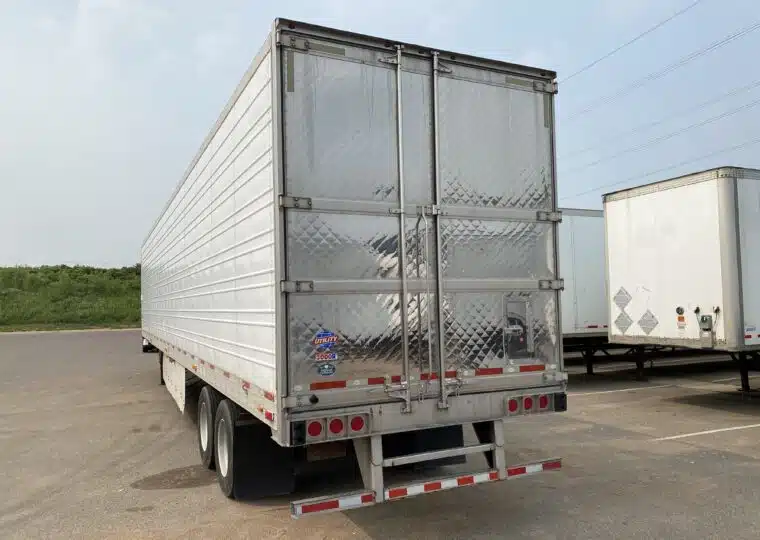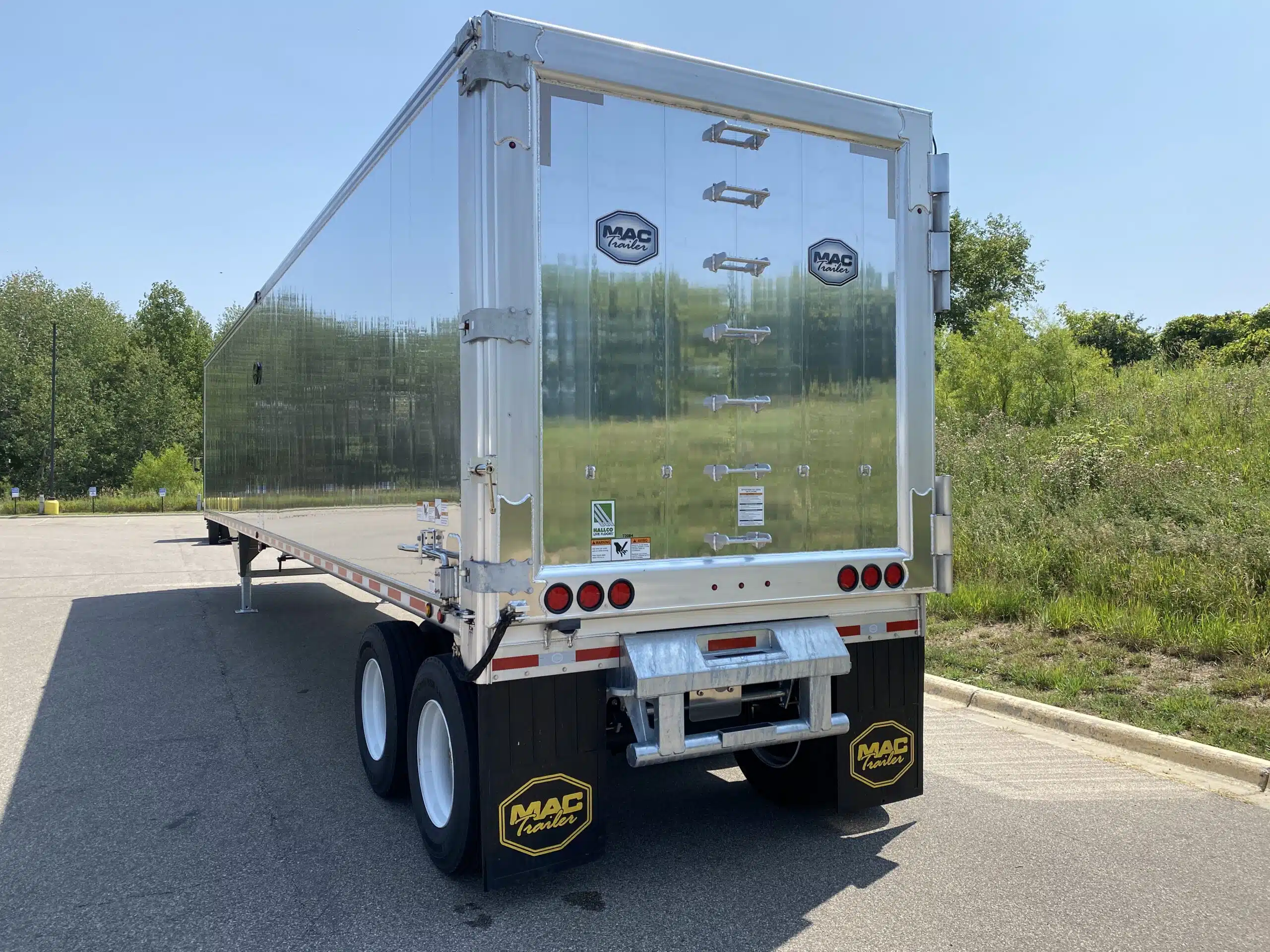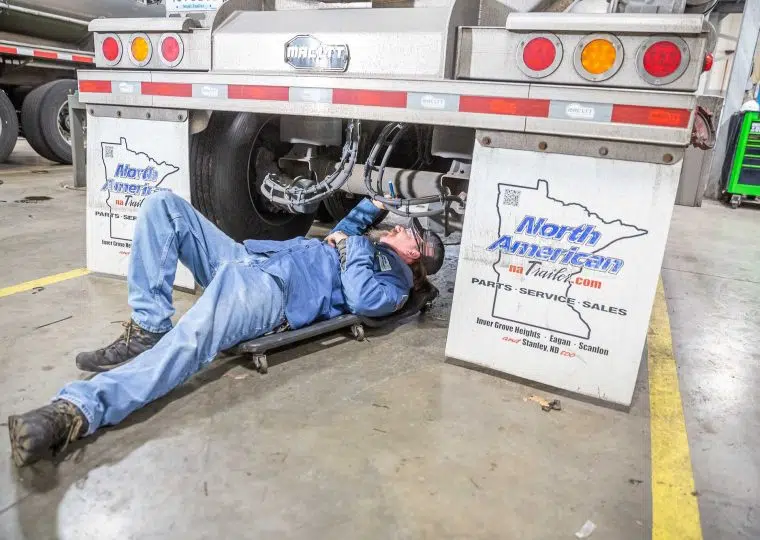When it comes to maintaining a semi-trailer, it’s crucial to make sure your rig is ready for the Department of Transportation (DOT) inspection. Inspections aren’t just a legal requirement, they’re a critical step in ensuring the safety and efficiency of your vehicle. For semi-truck operators and fleet managers, understanding what to expect during a DOT inspection can significantly reduce downtime and prevent potential penalties. Continue reading for detailed insights into the DOT inspection process and what inspectors are looking for so that you can stay better prepared and compliant.
 What are DOT Inspections?
What are DOT Inspections?
A DOT inspection is a federally mandated procedure designed to ensure that all parts of your semi-trailer are in optimal working condition and meet the safety standards set by the Department of Transportation. There are different levels of DOT inspections, ranging from a comprehensive examination of your vehicle (Level I) to a check of specific documents (Level VI).
Regardless of the level, the goal remains the same: to ensure that your semi-trailer is safe to operate on public roads. These inspections are far more than a legal formality, they play a pivotal role in preventing accidents caused by vehicle malfunction. Thus, staying informed about the DOT inspection process is vital for every semi-truck operator and fleet manager.
Pre-Inspection Checklist
Before undergoing a DOT inspection, it’s wise to make sure that your trailer has already been given a thorough check. Having a pre-inspection checklist and routine can help you more easily identify and fix issues that might lead to a failed inspection. Here are the most important areas to focus on:
- Brakes: Check for proper adjustment and wear. Ensure there are no leaks in the air system and that the brake pads are in good condition.
- Lights & Reflectors: Verify that all lights, including brake lights, turn signals, and reflectors, are functional and clean.
- Tires: Inspect tires for adequate tread depth, no cuts or bulges, and proper inflation.
- Coupling Devices: Ensure that the fifth wheel and kingpin are secure and functioning correctly.
- Suspension System: Look for any damage or excessive wear in the suspension components.
- Fluid Levels: Check engine oil, coolant, and other fluid levels.
- Documentation: Have all necessary documents readily available, including registration, insurance, and past inspection reports.
Being sure to inspect these areas carefully can give you a heads-up on anything that might need to be repaired to avoid failing your DOT inspection.
What DOT Inspections Look For
During a DOT inspection, inspectors will scrutinize several components of your semi-trailer to ensure they meet safety standards and federal regulations. Here’s what the typical DOT inspector is going to be looking for:
- Overall Condition: The general state of your semi-truck, including cleanliness and the presence of any obvious damage.
- Brake System: Inspectors will check for proper brake function, air leaks, and the condition of brake components.
- Steering System: The steering system is examined for wear and proper functioning.
- Lights & Signals: All lights and signals must be operational, properly mounted, and visible.
- Tires & Wheels: Inspectors will check tires for tread depth, wear patterns, and proper inflation. Wheels and rims are inspected for cracks and damages.
- Cargo Securement: The inspector will ensure that the cargo is secured according to regulations.
- Exhaust System: The condition and functionality of the exhaust system will be checked.
- Fuel System: Inspectors look for leaks or damages in the fuel system.
Understanding Your DOT Inspection Results
After the inspection concludes, you’ll be given a report that details the findings of the inspector. Having a clear understanding of this report is critical for maintaining compliance and safety standards, and it will classify the various issues based on their severity or relative importance.
Minor issues may not require immediate action but should be noted for future maintenance. Major issues, however, may deem your semi-trailer out of service until they are rectified, so it’s essential to address these issues promptly.
If your vehicle passes the inspection, you’ll receive a sticker indicating its compliance, usually valid for up to one year. Keeping a record of these inspection reports is vital for future reference and can be beneficial for routine maintenance planning.
Maintaining Compliance

- Regular Checks: Conduct daily or weekly checks of critical components like brakes, lights, and tires.
- Scheduled Maintenance: Follow the manufacturer’s recommended maintenance schedule for your semi-trailer.
- Record Keeping: Keep detailed records of all maintenance and repairs. This documentation can be invaluable during inspections.
- Staying Informed: Keep up to date with any changes in DOT regulations or standards.
- Employee Training: If you have a team, ensure they are trained in proper vehicle maintenance and pre-inspection procedures.
What to Do If You Fail Your Inspection
Experiencing a failed DOT inspection can be disheartening, but it’s an essential step towards ensuring the utmost safety and reliability of your semi-trailer. First and foremost, it’s crucial to thoroughly understand the issues outlined in the inspection report. This knowledge will guide you in prioritizing the necessary repairs, with an emphasis on addressing the most critical issues, especially those that result in the dreaded “out of service” status.
In some cases, particularly when faced with particularly intensive or complex repairs, your best route to getting back on the road may be to seek professional help from mechanics. After addressing these issues, a re-inspection is required to confirm that your semi-trailer meets the compliance standards.
This experience, albeit challenging, should be used as a learning opportunity to refine your pre-inspection checks and maintenance routines, thereby minimizing the likelihood of future DOT inspection failures. Proactively handling inspection failures enhances the safety and efficiency of your fleet, and also contributes to a safer driving environment for everyone on the road.
Trust North American Trailer to Help You Pass Your Inspection
At North American Trailer, we specialize in keeping your fleet road-ready and compliant. Trust us to guide you through the DOT inspection process with expert care and precision. For peace of mind and professional service, reach out to North American Trailer today and schedule a pre-inspection appointment at one of our locations in Minnesota, North Dakota or Wisconsin.


 What are DOT Inspections?
What are DOT Inspections?